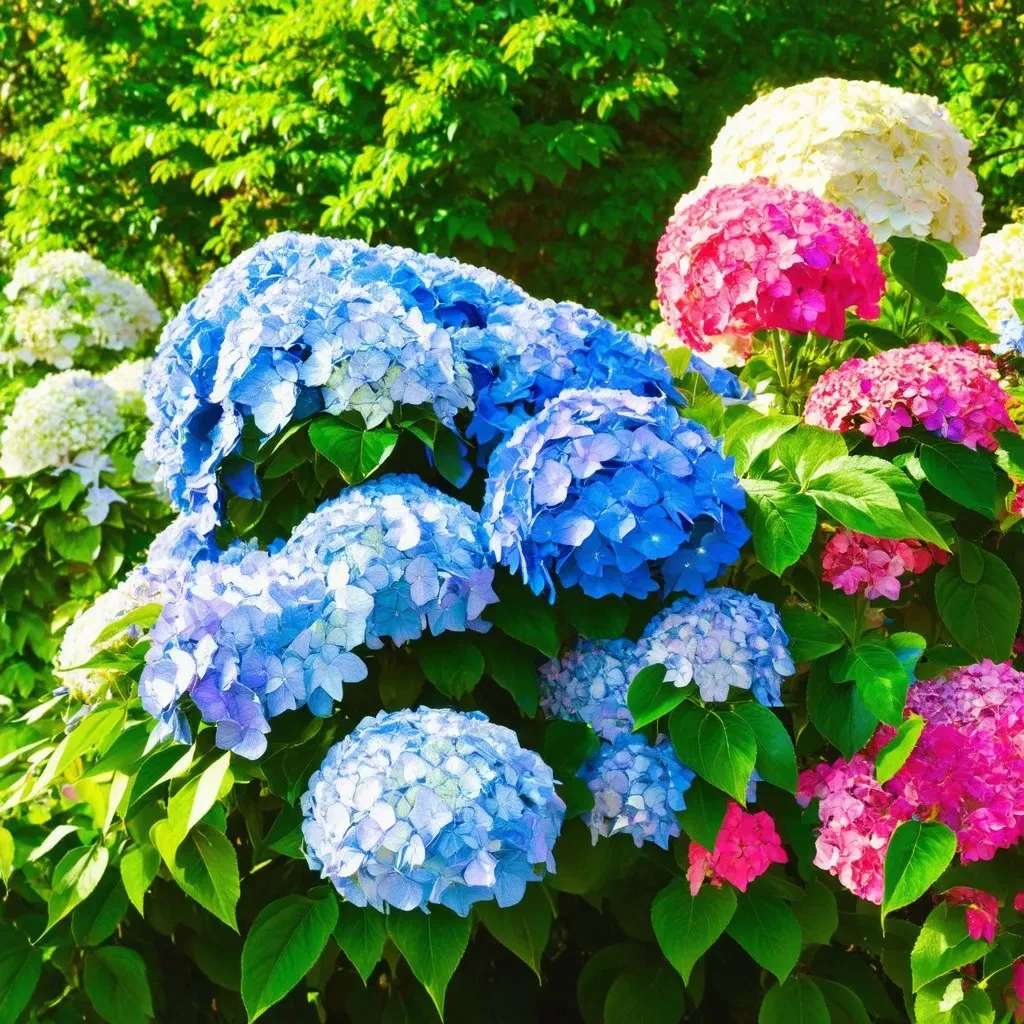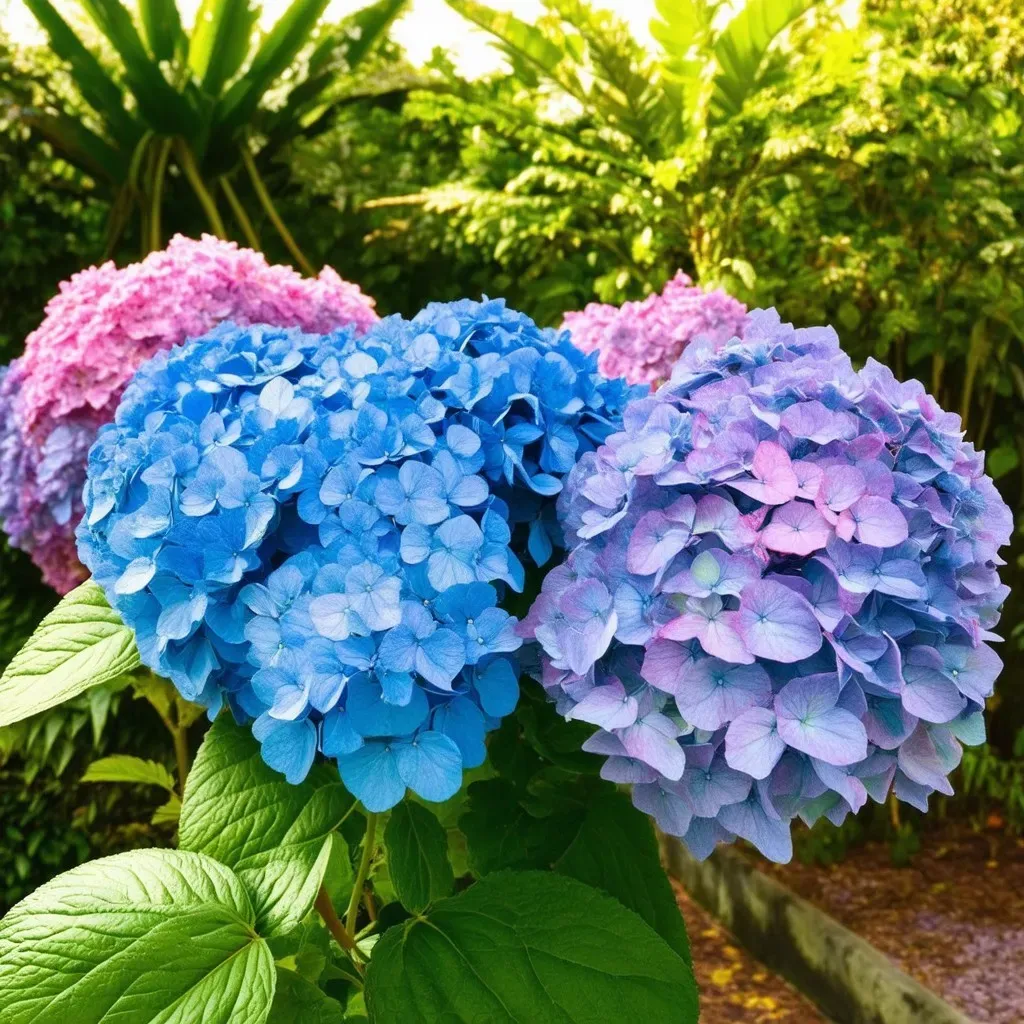Hydrangeas in Zone 10 are a beautiful choice for gardeners in warm climates, where these stunning shrubs can flourish and add vibrant colors to your landscape. These hardy plants not only provide a stunning visual appeal but also thrive in the unique weather patterns typical of Zone 10.
Understanding Zone 10 for Hydrangeas
Zone 10, according to the USDA Plant Hardiness Zone Map, experiences a climate characterized by minimum temperatures between 30°F and 40°F (-1°C to 4°C). This mild climate allows for a variety of flora, but not all hydrangeas can withstand the heat and humidity that Zone 10 can bring.
types of hydrangeas Suitable for Zone 10
Certain varieties of hydrangeas flourish particularly well in Zone 10. Below is a table showcasing some of the best Hydrangea Types and their respective characteristics:
| Hydrangea Variety | Common Name | Flower Color | Water Needs | Sunlight |
|---|---|---|---|---|
| hydrangea macrophylla | Mophead Hydrangea | Pink, Blue, White | Moderate | Partial Sun |
| Hydrangea paniculata | Panicle Hydrangea | White to Pink | Moderate to High | Full Sun to Partial Shade |
| Hydrangea quercifolia | Oakleaf Hydrangea | White to Pink | Moderate | Full Sun to Partial Shade |
| Hydrangea arborescens | Smooth Hydrangea | White | Moderate | Full Sun to Partial Shade |
Note: Flower colors can vary based on soil pH.
Growing Hydrangeas in Zone 10
Growing hydrangeas in Zone 10 involves understanding their specific needs, which can differ from Other regions. Many of the classic hydrangea varieties, especially Hydrangea macrophylla, also known as Mophead or French Hydrangeas, thrive in this zone. The key to successful gardening includes:
-
Soil Preparation: Hydrangeas prefer well-draining, loamy soil with a slightly acidic pH (between 5.2 to 6.5). Regular soil testing can ensure optimal conditions.
-
Watering Techniques: Hydrangeas need consistent moisture but are prone to root rot, so it’s crucial to strike a balance. Water deep, but infrequently, ensuring the soil is moist but not waterlogged.
-
Sunlight Requirements: Most hydrangeas will tolerate morning sunlight and afternoon shade, which protects them from the intense heat of the day. A clear understanding of your specific planting location will help in choosing the right variety.
Color Differences Based on Soil pH
The color of hydrangea blooms can be altered by adjusting the soil pH.
- Blue blooms are favored by acidic soil (pH below 5.5).
- Pink blooms thrive in alkaline soil (pH above 6.5).
- White blooms remain unaffected by soil pH.
This unique feature allows gardeners in Zone 10 the freedom to manipulate their hydrangea colors for dynamic landscaping.
Maintenance Tips for Zone 10 Hydrangeas
Maintaining hydrangeas in Zone 10 doesn’t require as much pruning as in colder zones, since they don’t die back to the ground during freezes. However, here are some tips:
- Deadheading: Regularly removing spent flowers promotes new blooms.
- Mulching: Apply mulch to retain soil moisture and suppress weeds.
- Fertilization: Feed your hydrangeas with a balanced fertilizer specifically designed for hydrangeas in spring to encourage a robust growing season.
Hydrangea Care Calendar
| Month | Care Task |
|---|---|
| January | Assess plants; begin planning for spring care |
| February | Apply deep watering, if necessary |
| March | Fertilize; start pruning if necessary |
| April | Plant new hydrangeas; check beds for weeds |
| May | Begin regular watering schedule; apply mulch |
| June | Monitor for pests and disease |
| July | Optional: pruning for shape; deadheading spent blooms |
| August | Continue watering; prepare for fall plantings |
| September | Fertilize for winter preparation |
| October | Tidy up any debris; prepare for colder months |

Common Pests and Problems
While hydrangeas are generally resilient, they can attract specific pests. Here’s a list of common pests, diseases, and respective treatments:
| Issue | Symptoms | Solution |
|---|---|---|
| Aphids | Curling leaves, sticky residue | Use insecticidal soap |
| Powdery mildew | White powdery spots on leaves | Improve air circulation; fungicide if severe |
| Root rot | Yellowing leaves, wilting | Ensure proper drainage; avoid overwatering |
| Leaf spot | Dark spots on leaves | Remove affected leaves; fungicide |
Additional Resources for Hydrangea Enthusiasts
For extensive reading on hydrangeas and gardening tips, check out Epic Gardening.
FAQ
Q: Can I grow hydrangeas in pots in Zone 10?
A: Yes! Just ensure you use a large enough pot with good drainage and maintain a steady watering schedule.
Q: Are there any hydrangeas that can tolerate full sun in Zone 10?
A: Yes, Hydrangea paniculata can tolerate more sun than other types and thrive in hot climates.
Q: When is the best time to plant hydrangeas in Zone 10?
A: Planting in early spring or fall is ideal to allow the roots to establish before the heat sets in.
Q: Do hydrangeas need to be brought indoors during winter in Zone 10?
A: No, Hydrangeas are typically fine outdoors during the winter in Zone 10, but keep an eye on extreme temperature fluctuations.

This guide provides a comprehensive understanding of cultivating and maintaining hydrangeas in Zone 10, giving gardeners the tools needed to enjoy a floral paradise in their warm climate gardens. Happy gardening!


